Toda y is the disappearance day of Namacarya Srila Haridasa Thakura, so we shall read from Sri Caitanya-caritamrta, Antya-lila, Chapter Eleven, “The Passing of Haridasa Thakura”:
y is the disappearance day of Namacarya Srila Haridasa Thakura, so we shall read from Sri Caitanya-caritamrta, Antya-lila, Chapter Eleven, “The Passing of Haridasa Thakura”:
The summary of this chapter is given by Srila Bhaktivinoda Thakura in his Amrta-pravaha-bhasya as follows. In this chapter it is described how Brahma Haridasa Thakura gave up his body with the consent of Sri Caitanya Mahaprabhu, and how the Lord Himself personally performed the funeral ceremony and carried the body to the sea. He personally entombed the body, covered it with sand, and erected a platform on the site. After taking a bath in the sea, He personally begged prasada of Jagannatha from shopkeepers and distributed prasada to the assembled devotees.
TEXT 1
namami haridasam tam
caitanyam tam ca tat-prabhum
samsthitam api yan-murtim
svanke krtva nanarta yah
TRANSLATION
Let me offer my respectful obeisances unto Haridasa Thakura and his master, Sri Caitanya Mahaprabhu, who danced with the body of Haridasa Thakura on His lap.
TEXTS 2–9
jaya jaya sri-caitanya jaya dayamaya
jayadvaita-priya nityananda-priya jaya
All glories to Lord Sri Caitanya Mahaprabhu, who is very merciful and who is very dear to Advaita Acarya and Lord Nityananda!
jaya srinivasesvara haridasa-natha
jaya gadadhara-priya svarupa-prana-natha
All glories to the master of Srinivasa Thakura! All glories to the master of Haridasa Thakura! All glories to the dear master of Gadadhara Pandita! All glories to the master of the life of Svarupa Damodara!
jaya kasi-priya jagadananda-pranesvara
jaya rupa-sanatana-raghunathesvara
All glories to Lord Sri Caitanya, who is very dear to Kasi Misra! He is the Lord of the life of Jagadananda and the Lord of Rupa Gosvami, Sanatana Gosvami, and Raghunatha dasa Gosvami.
jaya gaura-deha krsna svayam bhagavan
krpa kari’ deha’ prabhu, nija-pada-dana
All glories to the transcendental form of Sri Caitanya Mahaprabhu, who is Krsna Himself, the Supreme Personality of Godhead! My dear Lord, kindly give me shelter at Your lotus feet by Your causeless mercy.
jaya nityananda-candra jaya caitanyera prana
tomara caranaravinde bhakti deha’ dana
All glories to Lord Nityananda, who is the life and soul of Sri Caitanya Mahaprabhu! My dear Lord, kindly give me engagement in devotional service at Your lotus feet.
jaya jayadvaita-candra caitanyera arya
sva-carane bhakti deha’ jayadvaitacarya
All glories to Advaita Acarya, who is treated by Sri Caitanya Mahaprabhu as superior due to His age and respectability! Please give me engagement in devotional service at Your lotus feet.
jaya gaura-bhakta-gana,—gaura yanra prana
saba bhakta mili’ more bhakti deha’ dana
All glories to all the devotees of Sri Caitanya Mahaprabhu, for the Lord is their life and soul! All of you, kindly bestow devotional service upon me.
jaya rupa, sanatana, jiva, raghunatha
raghunatha, gopala,—chaya mora natha
All glories to Rupa Gosvami, Sanatana Gosvami, Jiva Gosvami, Raghunatha dasa Gosvami, Raghunatha Bhatta Gosvami, and Gopala Bhatta Gosvami, the Six Gosvamis of Vrndavana! They are all my masters.
COMMENT by Giriraj Swami
Here Srila Krsnadasa Kaviraja Gosvami is reciting the names of Lord Caitanya and His associates, both His expansions and His servants. Just by reciting the names of the devotees, one becomes purified and enlivened in devotional service.
Once, in 1969, hooligans attacked the Boston temple in the middle of the night. They broke in the front door and with chains and knives and sticks they started to beat the devotees. Eventually we managed to call the police. Although the hooligans tried to run away, the police caught some of them, and ultimately the matter went to court.
In the temple at that time was a very nice, simple, humble devotee named Nanda-kisora Prabhu. Nanda-kisora had never been in court before and had hardly ever spoken in public, so he was very bashful. The lawyer for the hooligans tried to make the case that we were followers of some weird cult. He was very aggressive, and Nanda-kisora didn’t really know what to say or do. The lawyer began by asking, “Who was present on the night of the crime? Who was sleeping with you in the temple?” So Nanda-kisora started to list the names of the devotees. He said, “Satsvarupa was there, Murari was there, Madan Mohan was there . . .” and by reciting the names of the devotees, which were also names of the Lord, all of his apprehensions and fears and hesitation went away, and he became completely enlivened and ready to speak. The lawyer for the hooligans deliberately tried to bewilder Nanda-kisora, and he began with the definition of Krsna from some dictionary or book, that Krsna was “the Hindu god of love and fertility.” After Nanda-kisora had chanted the names of the devotees, he felt quite empowered. So he said to the judge, “Your Honor, can I quote my authority?” The judge said, “Yes.” Then Nanda-kisora quoted the Brahma-samhita, “Isvarah paramah krsnah sac-cid-ananda vigrahah/ anadir adir govindah sarva-karana-karanam: Krsna who is known as Govinda, is the Supreme Godhead. He has an eternal, blissful, spiritual body. He is the origin of all. He has no other origin, and He is the prime cause of all causes.” And in the end we won the case.
Here Srila Krsnadasa Kaviraja Gosvami does the same thing. He recites the names of the devotees in order to invoke auspiciousness and get blessings for the work of narrating the pastimes of Sri Caitanya Mahaprabhu.
TEXT 10
e-saba prasade likhi caitanya-lila-guna
yaiche taiche likhi, kari apana pavana
I am writing this narration of the pastimes and attributes of the Lord by the mercy of Sri Caitanya Mahaprabhu and His associates. I do not know how to write properly, but I am purifying myself by writing this description.
TEXT 16
eka-dina govinda maha-prasada lana
haridase dite gela anandita hana
One day Govinda, the personal servant of Sri Caitanya Mahaprabhu, went in great jubilation to deliver the remnants of Lord Jagannatha’s food to Haridasa Thakura.
TEXT 17
dekhe,—haridasa thakura kariyache sayana
manda manda kariteche sankhya-sankirtana
When Govinda came to Haridasa, he saw that Haridasa Thakura was lying on his back and chanting his rounds very slowly.
TEXT 18
govinda kahe,—“utha asi’ karaha bhojana”
haridasa kahe,—“aji karimu langhana”
“Please rise and take your maha-prasada,” Govinda said.
Haridasa Thakura replied, “Today I shall observe fasting.
TEXT 19
“sankhya-kirtana pure nahi, ke-mate khaiba?
maha-prasada aniyacha, ke-mate upeksiba?”
“I have not finished chanting my regular number of rounds. How, then, can I eat? But you have brought maha-prasada, and how can I neglect it?”
TEXT 20
eta bali’ maha-prasada karila vandana
eka ranca lana tara karila bhaksana
TRANSLATION
Saying this, he offered prayers to the maha-prasada, took a little portion, and ate it.
PURPORT by Srila Prabhupada
Maha-prasada is nondifferent from Krsna. Therefore, instead of eating maha-prasada, one should honor it. It is said here, karila vandana, “he offered prayers.” When taking maha-prasada, one should not consider the food ordinary preparations. Prasada means favor. One should consider maha-prasada a favor of Krsna. As stated by Srila Bhaktivinoda Thakura, krsna bada dayamaya karibare jihva jaya svaprasada-anna dila bhai. Krsna is very kind. In this material world we are all very attached to tasting various types of food. Therefore, Krsna eats many nice varieties of food and offers the food back to the devotees, so that not only are one’s demands for various tastes satisfied, but by eating prasada he makes advancement in spiritual life. Therefore we should never consider ordinary food on an equal level with maha-prasada.
COMMENT
Maha-prasada is nondifferent from Krsna. Therefore we honor maha-prasada; we don’t eat it. But sometimes devotees do get in the mood of eating it. Once, here in Juhu, in the small temple, two devotees had a big fight and both ran to Srila Prabhupada, each to complain about the other. Srila Prabhupada heard the complaints of both sides and in the end delivered his judgment: the reason for all the fighting was that both devotees were eating too much maha-prasada. Because of eating too much opulent food, they were becoming passionate and fighting with each other. Srila Prabhupada said that we should take all the maha-prasada from the Deities’ plates and mix it all together so that one wouldn’t feel that one was sitting down to a delicious meal, but actually recognize that it was the Lord’s mercy and honor it and appreciate it as the Lord’s mercy, not as various types of tasty preparations.
TEXT 21
ara dina mahaprabhu tanra thani aila
“sustha hao, haridasa”—bali’ tanre puchila
The next day, Sri Caitanya Mahaprabhu went to Haridasa’s place and inquired from him, “Haridasa, are you well?”
TEXT 22
namaskara kari’ tenho kaila nivedana
“sarira sustha haya mora, asustha buddhi-mana”
Haridasa offered his obeisances to the Lord and replied, “My body is all right, but my mind and intelligence are not well.”
TEXT 23
prabhu kahe,—“kon vyadhi, kaha ta’ nirnaya?”
tenho kahe,—“sankhya-kirtana na puraya”
TRANSLATION
Sri Caitanya Mahaprabhu further inquired from Haridasa, “Can you ascertain what your disease is?”
Haridasa Thakura replied, “My disease is that I cannot complete my rounds.”
PURPORT
If one cannot complete the fixed number of rounds he is assigned, he should be considered to be in a diseased condition of spiritual life. Srila Haridasa Thakura is called namacarya. Of course, we cannot imitate Haridasa Thakura, but everyone must chant a prescribed number of rounds. In our Krsna consciousness movement we have fixed sixteen rounds as the minimum so that the Westerners will not feel burdened. These sixteen rounds must be chanted, and chanted loudly, so that one can hear himself and others.
COMMENT
The association of devotees is very important, because the devotees are always watching us and checking us to make sure that we are up to the standard. And we benefit from the watchful glance of other devotees. Naturally, every devotee is concerned that every other devotee should chant his or her rounds properly. Thus we should chant loudly enough that not only we but also others can hear: “Oh, yes, he is actually chanting.” They can hear if we are pronouncing properly. Sometimes we miss syllables, not really properly pronouncing and hearing every syllable. So Srila Prabhupada says, “One should chant loud enough for oneself to hear and for others.”
Haridasa Thakura says that his disease is that he cannot complete his rounds. Sometimes we may think that we have so much important service, we don’t have time to finish our rounds. And of course there are emergencies. Maybe on a particular day we cannot finish. But then, as Srila Prabhupada instructed, we should make up the rounds later. Once, an American boy joined our party when we were at the Ardha-kumbha-mela in 1971. From there we went to Gorakhpur, and in Gorakhpur the boy asked Srila Prabhupada, “If all service is absolute, why do we have to chant sixteen rounds?” Elsewhere in Sri Caitanya-caritamrta Srila Prabhupada explains that the basic principle of vaidhi-bhakti is to always remember Krsna and never forget Him, and that although we have so many other duties in relation to Krsna, in order to actually remember Krsna and never forget Him we must chant sixteen rounds every day. If we do not chant sixteen rounds, we may forget Krsna, even though we are engaged in activities that are meant for Krsna. But the boy asked Srila Prabhupada, “If all service is absolute, why do we have to chant sixteen rounds?” There was some discussion, and the boy didn’t really accept Srila Prabhupada’s answer. Again he raised the question. Finally Srila Prabhupada became very grave and said, “Why do you have to chant sixteen rounds? Because the Supreme Personality of Godhead wants you to. You can sleep the rest of the day. This is a special prerogative for you. But you must finish sixteen rounds.”
The idea obviously is not that we should sleep all day but that we should chant sixteen rounds. Srila Prabhupada is making the point that we shouldn’t allow other services to eclipse chanting. The emphasis here is on chanting sixteen rounds. Even if you don’t do any other service but just chant sixteen rounds, Srila Prabhupada says, “I will be satisfied; Krsna will be satisfied.” But if you work day and night doing various services but don’t chant sixteen rounds, Krsna and Krsna’s representatives may not be pleased.
TEXT 24
prabhu kahe,—“vrddha ha-ila ‘sankhya’ alpa kara
siddha-deha tumi, sadhane agraha kene kara?
TRANSLATION
“Now that you have become old,” the Lord said, “you may reduce the number of rounds you chant daily. You are already liberated, and therefore you need not follow the regulative principles very strictly.
PURPORT
Unless one has come to the platform of spontaneous love of God, he must follow the regulative principles. Haridasa Thakura was the living example of how to follow the regulative principles. Similarly, Raghunatha dasa Gosvami was also such a living example. In the Sad-gosvamy-astaka it is stated, sankhya-purvaka-nama-gana-natibhih kalavasani-krtau. The Gosvamis, especially Raghunatha dasa Gosvami, strictly followed all the regulative principles. The first regulative principle is that one must chant the Hare Krsna maha-mantra loud enough so that he can hear himself, and one must vow to chant a fixed number of rounds.
COMMENT
Some years ago one of the leaders who left the movement tried to change this formula and said, “You don’t have to chant loudly; you can chant silently within the mind.” He also said, “You don’t have to chant a fixed number of rounds, but you just chant for a certain period of time.” But here Srila Prabhupada states very clearly that we must chant loudly so that we and even others can hear, and that we must chant a fixed number of rounds. It’s very simple. But we have to be simple and follow it. As Srila Prabhupada remarked, Krsna consciousness is “simple for the simple but difficult for the crooked.”
TEXT 25
“loka nistarite ei tomara ‘avatara’
namera mahima loke karila pracara
TRANSLATION
“Your role in this incarnation is to deliver the people in general. You have sufficiently preached the glories of the holy name in this world.”
PURPORT
Haridasa Thakura is known as namacarya because it is he who preached the glories of chanting hari-nama, the holy name of God. By using the words tomara avatara (“your incarnation”), Sri Caitanya Mahaprabhu confirms that Haridasa Thakura is the incarnation of Lord Brahma. Srila Bhaktisiddhanta Sarasvati Thakura says that advanced devotees help the Supreme Personality of Godhead in His mission and that such devotees or personal associates incarnate by the will of the Supreme Lord. The Supreme Lord incarnates by His own will, and, by His will, competent devotees also incarnate to help Him in His mission. Haridasa Thakura is thus the incarnation of Lord Brahma, and other devotees are likewise incarnations who help in the prosecution of the Lord’s mission.
COMMENT
Here Lord Caitanya is saying, “You incarnated for a particular purpose, which was to preach the glories of the holy name, and you have preached the glories of the holy name sufficiently. So you need not follow so strictly now. Because you are old, you are not able to follow strictly.” Srila Bhaktisiddhanta Sarasvati Thakura instructed Srila Prabhupada to preach Krsna consciousness in the English language, especially in the Western world. But after some time, Srila Prabhupada returned to India with some disciples and began to concentrate his efforts here. One disciple asked Srila Prabhupada, “Your guru maharaja ordered you to preach in the West, but now you seem to be spending more time in India. Can you please explain?” Srila Prabhupada replied, “Yes, my guru maharaja did order me, and I have done that. Now I want to do this.” So, after fulfilling one instruction from the spiritual master, or one mission, one may proceed to the next.
TEXT 26
ebe alpa sankhya kari’ kara sankirtana”
haridasa kahe,—“suna mora satya nivedana
The Lord concluded, “Now, therefore, please reduce the fixed number of times you chant the Hare Krsna maha-mantra.”
Haridasa Thakura replied, “Kindly hear my real plea.
TEXT 27
“hina-jati janma mora nindya-kalevara
hina-karme rata muni adhama pamara
“I was born in an inferior family, and my body is most abominable. I always engage in low work. Therefore, I am the lowest, most condemned of men.
TEXT 28
“adrsya, asprsya more angikara kaila
raurava ha-ite kadi’ more vaikunthe cadaila
“I am unseeable and untouchable, but You have accepted me as Your servant. This means that You have delivered me from a hellish condition and raised me to the Vaikuntha platform.
TEXT 29
“svatantra isvara tumi hao icchamaya
jagat nacao, yare yaiche iccha haya
“My dear Lord, You are the fully independent Personality of Godhead. You act by Your own free will. You cause the whole world to dance and act as You like.
TEXT 30
“aneka nacaila more prasada kariya
viprera sraddha-patra khainu ‘mleccha’ hana
TRANSLATION
“My dear Lord, by Your mercy You have made me dance in many ways. For example, I was offered the sraddha-patra, which should have been offered to first-class brahmanas. I ate from it even though I was born in a family of meat-eaters.
PURPORT
Srila Bhaktisiddhanta Sarasvati Thakura, in his Anubhasya, quotes from the Visnu-smrti in reference to the sraddha-patra.
brahmanapasada hy ete
kathitah pankti-dusakah
etan vivarjayed yatnat
sraddha-karmani panditah
According to this verse, if one is born in a brahmana family but does not behave according to brahminical standards, he should not be offered the sraddha-patra, which is prasada offered to the forefathers. Advaita Acarya offered the sraddha-patra to Haridasa Thakura, not to a brahmana who had been born in a brahmana family. Although Haridasa Thakura was born in the family of meat-eaters, because he was an advanced devotee he was shown more respect than a first-class brahmana.
TEXT 31
“eka vancha haya mora bahu dina haite
lila samvaribe tumi—laya mora citte
“I have had one desire for a very long time. I think that quite soon, my Lord, You will bring to a close Your pastimes within this material world.
TEXT 32
“sei lila prabhu more kabhu na dekhaiba
apanara age mora sarira padiba
“I wish that You not show me this closing chapter of Your pastimes. Before that time comes, kindly let my body fall down in Your presence.
TEXT 33
“hrdaye dharimu tomara kamala carana
nayane dekhimu tomara canda vadana
“I wish to catch Your lotuslike feet upon my heart and see Your moonlike face.
TEXT 34
“jihvaya uccarimu tomara ‘krsna-caitanya’-nama
ei-mata mora iccha,—chadimu parana
“With my tongue I shall chant Your holy name, ‘Sri Krsna Caitanya!’ That is my desire. Kindly let me give up my body in this way.
TEXT 35
“mora ei iccha yadi tomara prasade haya
ei nivedana mora kara, dayamaya
“O most merciful Lord, if by Your mercy it is possible, kindly grant my desire.
TEXT 36
“ei nica deha mora paduka tava age
ei vancha-siddhi mora tomatei lage”
“Let this lowborn body fall down before You. You can make possible this perfection of all my desires.”
TEXT 37
prabhu kahe,—“haridasa, ye tumi magibe
krsna krpamaya taha avasya karibe
Sri Caitanya Mahaprabhu replied, “My dear Haridasa, Krsna is so merciful that He must execute whatever you want.
TEXT 38
“kintu amara ye kichu sukha, saba toma lana
tomara yogya nahe,—yabe amare chadiya”
“But whatever happiness is Mine is all due to your association. It is not fitting for you to go away and leave Me behind.”
TEXT 39
carane dhari’ kahe haridasa,—“na kariha ‘maya’
avasya mo-adhame, prabhu, kara ei ‘daya’
Catching the lotus feet of Sri Caitanya Mahaprabhu, Haridasa Thakura said, “My Lord, do not create an illusion! Although I am so fallen, You must certainly show me this mercy!
TEXT 40
“mora siromani kata kata mahasaya
tomara lilara sahaya koti-bhakta haya
“My Lord, there are many respectable personalities, millions of devotees, who are fit to sit on my head. They are all helpful in Your pastimes.
TEXT 41
“ama-hena yadi eka kita mari’ gela
eka pipilika maile prthvira kahan hani haila?
“My Lord, if an insignificant insect like me dies, what is the loss? If an ant dies, where is the loss to the material world?
TEXT 42
“‘bhakata-vatsala’ prabhu, tumi, mui ‘bhaktabhasa’
avasya purabe, prabhu, mora ei asa”
“My Lord, You are always affectionate to Your devotees. I am just an imitation devotee, but nevertheless I wish that You fulfill my desire. That is my expectation.”
COMMENT
We can see how humble Haridasa Thakura is. He feels himself to be fallen, less than other devotees. In fact, he does not even consider himself to be a devotee. He refers to himself as bhaktabhasa, an “imitation devotee.” Thus he demonstrates the qualities necessary to chant the holy name constantly:
trnad api su-nicena
taror iva sahisnuna
amanina mana-dena
kirtaniyah sada harih
“One who thinks himself lower than the grass, who is more tolerant than a tree, and who does not expect personal honor yet is always prepared to give all respect to others can very easily always chant the holy name of the Lord.” (Siksastaka 3) And he did chant the holy name constantly, at least three lakh names (one hundred ninety-six rounds) daily.
TEXT 43
madhyahna karite prabhu calila apane
isvara dekhiya kali dibena darasane
Because He had to perform His noon duties, Sri Caitanya Mahaprabhu got up to leave, but it was settled that the following day, after He saw Lord Jagannatha, He would return to visit Haridasa Thakura.
TEXTS 44–65
After embracing him, Sri Caitanya Mahaprabhu left to perform His noon duties and went to the sea to take His bath.
The next morning, after visiting the Jagannatha temple, Sri Caitanya Mahaprabhu, accompanied by all His other devotees, came hastily to see Haridasa Thakura.
Sri Caitanya Mahaprabhu and the other devotees came before Haridasa Thakura, who offered his respects to the lotus feet of Sri Caitanya Mahaprabhu and all the Vaisnavas.
Lord Sri Caitanya Mahaprabhu inquired, “My dear Haridasa, what is the news?”
Haridasa Thakura replied, “My Lord, whatever mercy You can bestow upon me.”
Upon hearing this, Sri Caitanya Mahaprabhu immediately began great congregational chanting in the courtyard. Vakresvara Pandita was the chief dancer.
Headed by Svarupa Damodara Gosvami, all the devotees of Sri Caitanya Mahaprabhu surrounded Haridasa Thakura and began congregational chanting.
In front of all the great devotees like Ramananda Raya and Sarvabhauma Bhattacarya, Sri Caitanya Mahaprabhu began to describe the holy attributes of Haridasa Thakura.
As He described the transcendental attributes of Haridasa Thakura, Sri Caitanya Mahaprabhu seemed to possess five mouths. The more He described, the more His great happiness increased.
After hearing of the transcendental qualities of Haridasa Thakura, all the devotees present were struck with wonder. They all offered their respectful obeisances to the lotus feet of Haridasa Thakura.
Haridasa Thakura made Sri Caitanya Mahaprabhu sit down in front of him, and then he fixed his eyes, like two bumblebees, on the lotus face of the Lord.
He held the lotus feet of Sri Caitanya Mahaprabhu on his heart and then took the dust of the feet of all the devotees present and put it on his head.
He began to chant the holy name of Sri Krsna Caitanya again and again. As he drank the sweetness of the face of the Lord, tears constantly glided down from his eyes.
While chanting the holy name of Sri Krsna Caitanya, he gave up his air of life and left his body.
Seeing the wonderful death of Haridasa Thakura by his own will, which was just like a great mystic yogi’s, everyone remembered the passing away of Bhisma.
There was a tumultuous noise as they all chanted the holy names “Hari” and “Krsna.” Sri Caitanya Mahaprabhu became overwhelmed with ecstatic love.
The Lord raised the body of Haridasa Thakura and placed it on His lap. Then He began to dance in the courtyard in great ecstatic love.
Because of Sri Caitanya Mahaprabhu’s ecstatic love, all the devotees were helpless, and in ecstatic love they also began to dance and chant congregationally.
Sri Caitanya Mahaprabhu danced for some time, and then Svarupa Damodara Gosvami informed Him of other rituals for the body of Haridasa Thakura.
The body of Haridasa Thakura was then raised onto a carrier that resembled an airship and taken to the sea, accompanied by congregational chanting.
Sri Caitanya Mahaprabhu danced in front of the procession, and Vakresvara Pandita, along with the other devotees, chanted and danced behind Him.
Sri Caitanya Mahaprabhu bathed the body of Haridasa Thakura in the sea and then declared, “From this day on, this sea has become a great pilgrimage site.”
Everyone drank the water that had touched the lotus feet of Haridasa Thakura, and then they smeared remnants of Lord Jagannatha’s sandalwood pulp over Haridasa Thakura’s body.
COMMENT
We don’t have time to read the whole chapter, but in summary Sri Caitanya Mahaprabhu placed the divine form of Haridasa Thakura in samadhi in the earth, covered it with a mound of sand, and on top of the mound planted a tulasi tree. Then He went into the marketplace and begged maha-prasada to distribute to all the devotees. And He personally distributed the prasada. Svarupa Damodara Gosvami advised Him, “My Lord, this is not a proper service for You. You sit down and take prasada with the devotees. Until You take prasada nobody else will honor it.” Then Svarupa Damodara Gosvami distributed the prasada with a few other confidential devotees.
TEXT 89
bhojana kariya sabe kaila acamana
sabare paraila prabhu malya-candana
After all the devotees finished accepting prasada and had washed their hands and mouths, Sri Caitanya Mahaprabhu decorated each of them with a flower garland and sandalwood pulp.
TEXT 90
premavista hana prabhu karena vara-dana
suni’ bhakta-ganera judaya manas-kama
Overwhelmed with ecstatic love, Sri Caitanya Mahaprabhu offered a benediction to all the devotees, which all the devotees heard with great satisfaction.
TEXTS 91–93
“haridasera vijayotsava ye kaila darsana
ye ihan nrtya kaila, ye kaila kirtana
“ye tanre valuka dite karila gamana
tara madhye mahotsave ye kaila bhojana
“acire ha-ibe ta-sabara ‘krsna-prapti’
haridasa-darasane haya aiche ‘sakti’
Sri Caitanya Mahaprabhu gave this benediction: “Anyone who has seen the festival of Sri Haridasa Thakura’s passing away, anyone who has chanted and danced here, anyone who has offered sand on the body of Haridasa Thakura, and anyone who has joined this festival to partake of the prasada will achieve the favor of Krsna very soon. There is such wonderful power in seeing Haridasa Thakura.
TEXT 94
“krpa kari’ krsna more diyachila sanga
svatantra krsnera iccha,—kaila sanga-bhanga
“Being merciful upon Me, Krsna gave Me the association of Haridasa Thakura. Being independent in His desires, He has now broken that association.
TEXT 95
“haridasera iccha yabe ha-ila calite
amara sakati tanre narila rakhite
“When Haridasa Thakura wanted to leave this material world, it was not within My power to detain him.
TEXT 96
“iccha-matre kaila nija-prana niskramana
purve yena suniyachi bhismera marana
“Simply by his will, Haridasa Thakura could give up his life and go away, exactly like Bhisma, who previously died simply by his own desire, as we have heard from sastra.
TEXT 97
“haridasa achila prthivira ‘siromani’
taha vina ratna-sunya ha-ila medini
“Haridasa Thakura was the crown jewel on the head of this world; without him, this world is now bereft of its valuable jewel.”
TEXT 98
‘jaya jaya haridasa’ bali’ kara hari-dhvani”
eta bali’ mahaprabhu nacena apani
Sri Caitanya Mahaprabhu then told everyone, “Say ‘All glories to Haridasa Thakura!’ and chant the holy name of Hari.” Saying this, He personally began to dance.
TEXT 99
sabe gaya,—“jaya jaya haridasa
namera mahima yenha karila prakasa”
Everyone began to chant, “All glories to Haridasa Thakura, who revealed the importance of chanting the holy name of the Lord!”
TEXT 100
tabe mahaprabhu saba bhakte vidaya dila
harsa-visade prabhu visrama karila
Thereafter, Sri Caitanya Mahaprabhu bade farewell to all the devotees, and He Himself, with mixed feelings of happiness and distress, took rest.
COMMENT
Srila Prabhupada has explained the mixed feelings of happiness and distress that one experiences when a Vaisnava leaves: we feel happy because we know the Vaisnava has gone to Krsna, and we feel distress because we will miss the devotee’s association.
TEXT 101
ei ta’ kahilun haridasera vijaya
yahara sravane krsne drdha-bhakti haya
TRANSLATION
Thus I have spoken about the victorious passing away of Haridasa Thakura. Anyone who hears this narration will certainly fix his mind firmly in devotional service to Krsna.
PURPORT
At Purusottama-ksetra, or Jagannatha Puri, there is a temple of Tota-gopinatha. If one goes from there to the sea, he can discover the tomb of Haridasa Thakura still existing. Every year on the date of Ananta-caturdasi there is a festival to commemorate the passing away of Haridasa Thakura. At the same place, three Deities of Nityananda, Krsna Caitanya, and Advaita Prabhu were established about one hundred years ago. Near this temple and the tomb of Haridasa Thakura, Srila Bhaktivinoda Thakura constructed a small house called the Bhakti-kuti. In the Bengali year 1329, the Purusottama-matha, a branch of the Gaudiya Matha, was established there.
COMMENT
The same house has now come to ISKCON.
PURPORT (concluded)
In the Bhakti-ratnakara it is stated:
srinivasa sighra samudrera kule gela
haridasa-thakurera samadhi dekhila
bhumite padiya kaila pranati vistara
bhagavata-gana sri-samadhi-sannidhane
srinivase sthira kaila sasneha-vacane
punah srinivasa sri-samadhi pranamiya
ye vilapa kaila, ta sunile drave hiya
“Srinivasa Thakura quickly ran to the seashore. When he saw the tomb of Haridasa Thakura, he immediately fell down offering prayers and almost fainted. The devotees present there pacified him with very sweet and affectionate words, and Srinivasa again offered his obeisances to the tomb. Hearing of the separation that Srinivasa expressed in his lamentation at the tomb of Haridasa Thakura makes one’s heart melt.”
TEXT 102
caitanyera bhakta-vatsalya ihatei jani
bhakta-vancha purna kaila nyasi-siromani
From the incident of Haridasa Thakura’s passing away and the great care Sri Caitanya Mahaprabhu took in commemorating it, one can understand just how affectionate He is toward His devotees. Although He is the topmost of all sannyasis, He fully satisfied the desire of Haridasa Thakura.
COMMENT
Lord Caitanya is described here as nyasi-siromani, the topmost of all sannyasis. Sannyasis are supposed to be detached and neutral in every situation. But although Lord Caitanya was the topmost of all sannyasis, still He fulfilled the desire of Haridasa Thakura. He was not indifferent. His affection for His devotee prevailed.
TEXT 103
sesa-kale dila tanre darsana-sparsana
tanre kole kari’ kaila apane nartana
At the last stage of Haridasa Thakura’s life, Sri Caitanya Mahaprabhu gave him His company and allowed him to touch Him. Thereafter, He took the body of Thakura Haridasa on His lap and personally danced with it.
TEXT 104
apane sri-haste krpaya tanre valu dila
apane prasada magi’ mahotsava kaila
Out of His causeless mercy the Lord personally covered the body of Haridasa Thakura with sand and personally begged alms from the shopkeepers. Then He conducted a great festival to celebrate the passing away of Haridasa Thakura.
TEXT 105
maha-bhagavata haridasa-parama-vidvan
e saubhagya lagi’ age karila prayana
Haridasa Thakura was not only the topmost devotee of the Lord but also a great and learned scholar. It was his great fortune that he passed away before Sri Caitanya Mahaprabhu.
COMMENT
Although Haridasa Thakura chanted the holy name day and night, he also found time to read and hear scripture, and he discoursed on the glories of the holy name with reference to scripture. And although he was fully absorbed in chanting the holy name, he was affectionate to the devotees and always tried to help them. Even now he will help us if we sincerely approach him and beg him to assist us in our efforts to serve Srila Prabhupada and Sri Caitanya Mahaprabhu and to chant the holy names of Krsna. As Thakura Bhaktivinoda wrote of him:
He reasons ill who tells that Vaisnavas die
When thou art living still in sound!
The Vaisnavas die to live, and living try
To spread the holy name around.
Haridasa Thakura was compassionate to all living entities. He was full of love for the holy name and for his worshipable Lord Sri Caitanya Mahaprabhu. When the Muslim rulers threatened him with death if he did not renounce chanting the name of the “Hindu god” Krsna, Haridasa replied:
khanda khanda hai deha yaya yadi prana
tabu ami vadane na chadi hari-nama
“Even if my body is cut into pieces and I lose my life, I will never give up chanting Lord Krsna’s holy name.” (Cb Adi 16.94) Haridasa Thakura’s determination, even in the face of the worst adversity, should serve as an example and inspiration for us all.
At the end, Haridasa Thakura begged for the mercy to depart before Sri Caitanya Mahaprabhu, in the Lord’s presence, and the affectionate Lord most kindly fulfilled his desire.
Namacarya Srila Haridasa Thakura ki jaya!
Sri Caitanya Mahaprabhu ki jaya!
Srila Prabhupada ki jaya!
Gaura-premanande hari-haribol!
[A Talk by Giriraj Swami, September 26, 1996, Bombay]


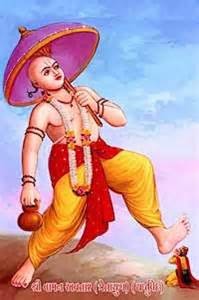
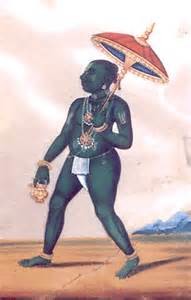
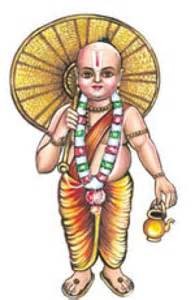
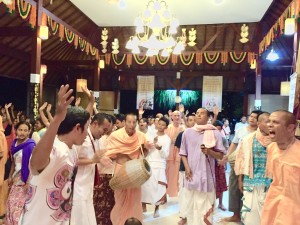
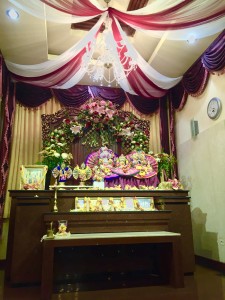
















 y is the disappearance day of Namacarya Srila Haridasa Thakura, so we shall read from Sri Caitanya-caritamrta, Antya-lila, Chapter Eleven, “The Passing of Haridasa Thakura”:
y is the disappearance day of Namacarya Srila Haridasa Thakura, so we shall read from Sri Caitanya-caritamrta, Antya-lila, Chapter Eleven, “The Passing of Haridasa Thakura”:

